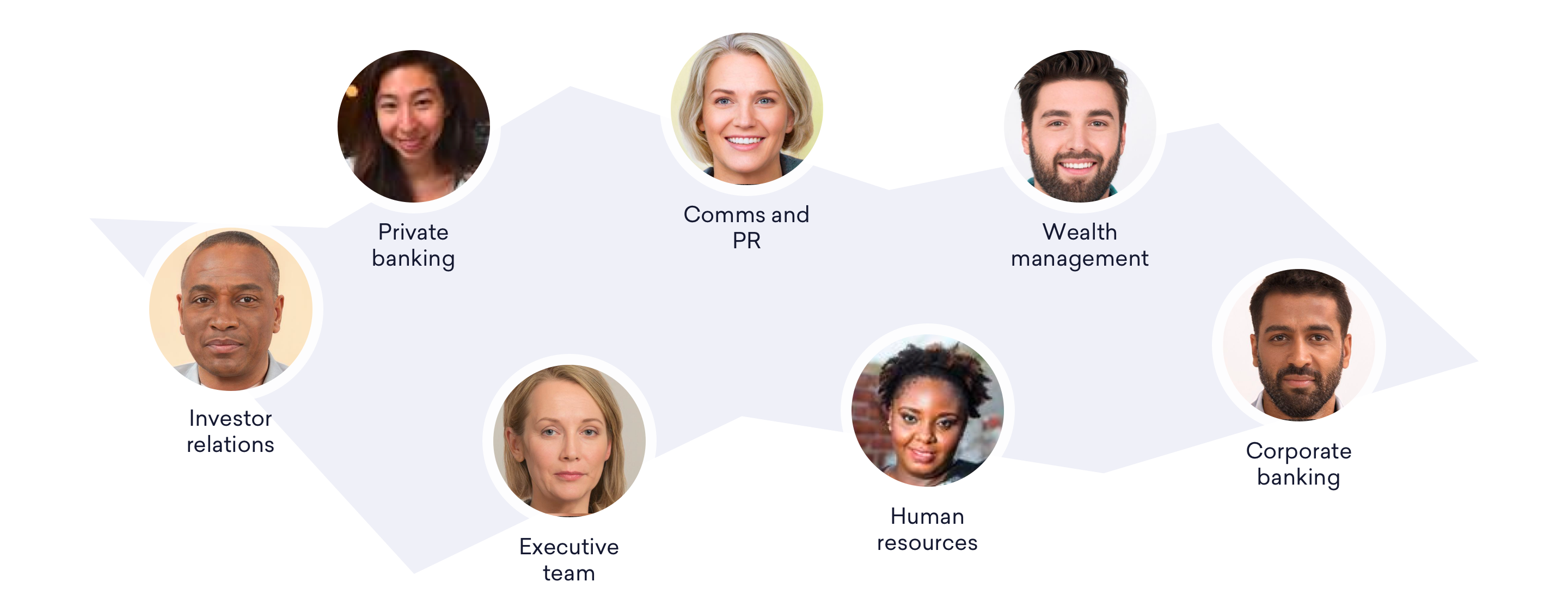Company
£1b+ revenue
10,000+ employees
Finance
B2B/B2C
Global
Team
2
UX/UI strategists
2
UX/UI designers
1
Front-end developer
Banking and finance giant Investec has a global workforce of over 10,000 employees, spread across more than 50 different locations.
They were keen to overcome physical divides and existing silos by creating a platform for teams to share knowledge, learn from each other and grow global interactions.
Unsure of exactly how to tackle the problem, the company needed a helping hand to find the right path.

Adapting existing digital platforms
The Investec development team had already identified off the shelf community software which could be integrated with their existing systems, maintaining existing roles and access rights for employees.
Taking this route rather than building something bespoke was important to avoid using up already in-demand dev resource.
Whilst this third party platform was a good fit, it also came with just about every feature and functionality imaginable. Our first task was to figure out which were genuinely useful and which were just going to add noise.
Presenting your users with too much all at once is a surefire way to confuse them and put them off. Product scopes are always a fine balance between features and focus.
The right tools for the team: taking third party platforms to expert level
Dive deeper into customising and building upon digital tools to get the insights your business needs.

User research
To figure out what would represent the most value to users we set up interviews with staff from different departments across the organisation, which we recorded to share with the rest of the team.
The platform aimed to provide an environment where people could enhance day to day business activities as well as grow personal interactions. By talking to staff we were able to uncover how people would naturally communicate in the workplace – both professionally and socially, and to find a balance in providing them side by side.
As you might expect, feedback varied greatly across the organisation, but we were able to uncover trends and patterns that helped us understand user habits.
UX and visuals
Next up was the application UX and design direction. The third party platform came with pre-existing templates, so we needed to review how well suited these were to the needs of the organisation and the associated brand.
To forge a direction, we rapidly created prototypes to test ideas out. It was essential to the in-house development team that designs could be implemented quickly and easily, so this factored into how far from the existing templates it was wise to stray.
A large part of the visual discussion was around the tone that the platform set. Were we looking to come across as fun and casual or was this 100% business?
We explored different routes, showing how they might work with the brand to come up with a direction that felt suitable in context.
Launch and iteration
Solving problems doesn’t always require a bespoke platform, whatever the size of your organisation. With user research and testing to identify the problems to focus on, we helped this large corporate to leverage a third party allowing employees to connect and break out of silos.
Getting the product out there and used by the workforce was essential to learn how effective our solution was going to prove. Launching to a subset of teams and then rolling out to the wider organisation proved a good way of testing engagement and making changes based on user feedback and behaviour.
Any product that relies on interaction of its users to make it work will always shift and change as the users come on board and start interacting. A constant feedback loop is essential to adapt and change, as needs shift.